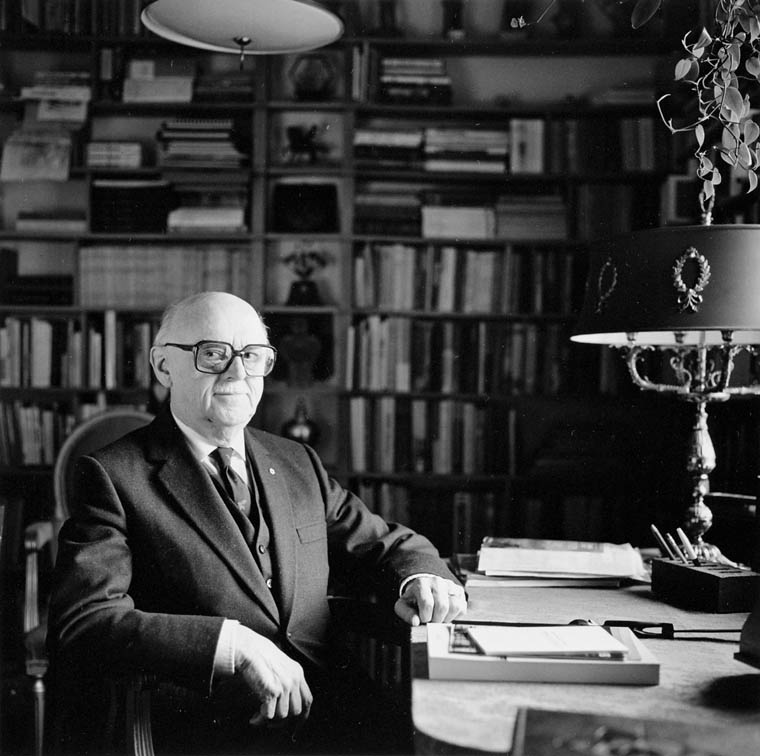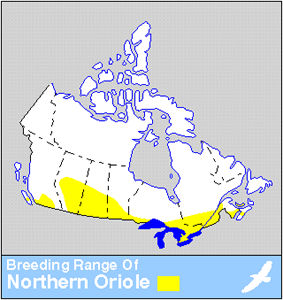Browse "Things"
-
Article
Order-in-Council
A federal order-in-council is a statutory instrument by which the governor general (the executive power of the governor-in-council), acting on the advice and consent of the King's Privy Council for Canada, expresses a decision. In practice, orders-in-council are drafted by Cabinet and formally approved by the governor general. Orders-in-council are not discussed by Parliament, and do not require legislation by Parliament, before being implemented.
"https://d2ttikhf7xbzbs.cloudfront.net/media/media/11551bec-a5f6-4e78-b101-265ddf7610cb.jpg" // resources/views/front/categories/view.blade.php
https://d2ttikhf7xbzbs.cloudfront.net/media/media/11551bec-a5f6-4e78-b101-265ddf7610cb.jpg
-
Article
Order-in-Council P.C. 1911-1324 — the Proposed Ban on Black Immigration to Canada
Order-in-Council P.C. 1324 was approved on 12 August 1911 by the Cabinet of Prime Minister Sir Wilfrid Laurier. The purpose of the order was to ban Black persons from entering Canada for a period of one year because, it read, “the Negro race…is deemed unsuitable to the climate and requirements of Canada.” The order-in-council was the culmination of what researcher R. Bruce Shepard has called Canada’s “campaign of diplomatic racism.” Though the order never became law, the actions of government officials made it clear that Black immigrants were not wanted in Canada (see Immigration).
"https://d2ttikhf7xbzbs.cloudfront.net/media/media/9d43e9db-d903-4447-a4a6-ad497d99685f.jpg" // resources/views/front/categories/view.blade.php
https://d2ttikhf7xbzbs.cloudfront.net/media/media/9d43e9db-d903-4447-a4a6-ad497d99685f.jpg
-
Article
Order of Canada
The Order of Canada, the highest level of distinction in the Canadian Honours System, was established on 1 July 1967, the 100th anniversary of Confederation. Any Canadian may be appointed a Member (CM), Officer (OC) or Companion (CC) of the Order in recognition of outstanding achievements or exemplary contributions in any sector of Canadian society. Appointments to the Order of Canada are made by the Governor General on the recommendation of the Advisory Council for the Order. This body, chaired by the Chief Justice of Canada, meets twice per year to consider nominations made by members of the public. From 1967 to 2015, 6,530 people from all walks of life were appointed to the Order.
"https://d2ttikhf7xbzbs.cloudfront.net/media/media/0e8ba642-899b-4107-b3c7-5a059d4c22fb.jpg" // resources/views/front/categories/view.blade.php
https://d2ttikhf7xbzbs.cloudfront.net/media/media/0e8ba642-899b-4107-b3c7-5a059d4c22fb.jpg
-
Article
Ordre de Bon Temps
Ordre de Bon Temps ("Order of Good Cheer"), was founded at Port-Royal in 1606 by Samuel de Champlain .
"https://d2ttikhf7xbzbs.cloudfront.net/media/media/eae4b142-cd6b-4c86-a303-32da3140b207.jpg" // resources/views/front/categories/view.blade.php
https://d2ttikhf7xbzbs.cloudfront.net/media/media/eae4b142-cd6b-4c86-a303-32da3140b207.jpg
-
Article
Ordre de Jacques-Cartier
The Ordre de Jacques-Cartier (OJC), commonly known as “La Patente,” was a secret society founded in 1926 in Vanier (now Ottawa), Ontario, to further the religious, social and economic interests of French Canadians. At the forefront of the conflicts over language and nationalism until the 1960s, it discreetly wielded its influence by infiltrating various associations, and it mobilized its members within a strict authoritarian structure. The rise of Québécois nationalism and internal tensions led to its dissolution in 1965.
"https://d2ttikhf7xbzbs.cloudfront.net/media/media/4b2db646-824c-461d-acf7-30a5d5095b35.jpg" // resources/views/front/categories/view.blade.php
https://d2ttikhf7xbzbs.cloudfront.net/media/media/4b2db646-824c-461d-acf7-30a5d5095b35.jpg
-
Article
Oregon Treaty
The Oregon Treaty was an agreement between Britain and the United States. It came into force on 15 June 1846. It formalized the border between the United States and British North America west of the Rocky Mountains. It extended the border along the 49th parallel to the Pacific Ocean and down “the middle” of the channel that separates Vancouver Island from the mainland. The treaty resolved an important dispute between the two nations. But the lack of precision regarding the waterways between the mainland and Vancouver Island led to a dispute over the San Juan Islands, which resulted in an 1859 diplomatic conflict known as the Pig War.
"https://d2ttikhf7xbzbs.cloudfront.net/media/new_article_images/OregonTreaty/Vancouver_Island-relief.png" // resources/views/front/categories/view.blade.php
https://d2ttikhf7xbzbs.cloudfront.net/media/new_article_images/OregonTreaty/Vancouver_Island-relief.png
-
Article
Orff Approach
The Orff approach, also known as Orff-Schulwerk or Music for Children, is an approach to music education conceived by the German composer Carl Orff (1895-1982). It was developed in the 1920s and 1930s while Orff was music director of the Günther-Schule, a school of dance and music in Munich. The guiding principles were contained in his publication Orff-Schulwerk (Mainz 1930-5), to which revisions came later.
"https://d2ttikhf7xbzbs.cloudfront.net/carl_orff_um-1970.jpg" // resources/views/front/categories/view.blade.php
https://d2ttikhf7xbzbs.cloudfront.net/carl_orff_um-1970.jpg
-
Article
Organic Agriculture
Organic agriculture is defined as the sustainable cultivation of land for food production that nourishes soil life, nurtures animals in their natural environment and feeds them according to their physiology.
"https://development.thecanadianencyclopedia.ca/images/tce_placeholder.jpg?v=e9dca980c9bdb3aa11e832e7ea94f5d9" // resources/views/front/categories/view.blade.php
https://development.thecanadianencyclopedia.ca/images/tce_placeholder.jpg?v=e9dca980c9bdb3aa11e832e7ea94f5d9
-
Macleans
'Organic' Food Label Questioned
While working as an independent organic food inspector, Mischa Popoff says he felt like "a police officer without a billy club or handcuffs.This article was originally published in Maclean's Magazine on September 10, 2007
"https://development.thecanadianencyclopedia.ca/images/tce_placeholder.jpg?v=e9dca980c9bdb3aa11e832e7ea94f5d9" // resources/views/front/categories/view.blade.php
https://development.thecanadianencyclopedia.ca/images/tce_placeholder.jpg?v=e9dca980c9bdb3aa11e832e7ea94f5d9
-
Article
Organized Crime in Canada
Organized crime is defined in the Criminal Code as a group of three or more people whose purpose is the commission of one or more serious offences that would “likely result in the direct or indirect receipt of a material benefit, including a financial benefit, by the group.” Organized crime centres on illegal means of making money, such as gambling; prostitution; pornography; drug trafficking; insurance and construction fraud; illegal bankruptcy; motor vehicle theft; computer crime; and counterfeiting, among many others. The structure, sophistication and widespread nature of organized crime first became evident in the 1960s and 1970s. Some criminal organizations are based on ethnicity, such as the Italian Mafia and Chinese triads. Others are founded within certain industries (e.g., construction) or activities (e.g., biker gangs).
"https://d2ttikhf7xbzbs.cloudfront.net/media/new_article_images/OrganizedCrime/Bonannos_and_Rizzuto.jpg" // resources/views/front/categories/view.blade.php
https://d2ttikhf7xbzbs.cloudfront.net/media/new_article_images/OrganizedCrime/Bonannos_and_Rizzuto.jpg
-
Article
Organized Crime in Canada (Plain-Language Summary)
Organized crime is when a group of three or more people commit crimes to make money. Such crimes include gambling; prostitution; pornography; drug trafficking; insurance and construction fraud; illegal bankruptcy; motor vehicle theft; computer crime; and counterfeiting. The widespread nature of organized crime first came to light in the 1960s. Some criminal groups are based on ethnicity. Others are formed within certain industries. New laws were made in the early 2000s to address organized crime in Canada. This article is a plain-language summary of organized crime in Canada. If you are interested in reading about this topic in more depth, please see our full-length entry: Organized Crime in Canada.
"https://d2ttikhf7xbzbs.cloudfront.net/media/new_article_images/OrganizedCrime/Bonannos_and_Rizzuto.jpg" // resources/views/front/categories/view.blade.php
https://d2ttikhf7xbzbs.cloudfront.net/media/new_article_images/OrganizedCrime/Bonannos_and_Rizzuto.jpg
-
Article
Orienteering
Orienteering is a sport in which participants navigate with the aid of a map and compass around a prescribed course, checking in at specified and clearly marked control points.
"https://development.thecanadianencyclopedia.ca/images/tce_placeholder.jpg?v=e9dca980c9bdb3aa11e832e7ea94f5d9" // resources/views/front/categories/view.blade.php
https://development.thecanadianencyclopedia.ca/images/tce_placeholder.jpg?v=e9dca980c9bdb3aa11e832e7ea94f5d9
-
Article
Origins of Ice Hockey
The origins of ice hockey have long been debated. In 2008, the International Ice Hockey Federation (IIHF) officially declared that the first game of organized ice hockey was played in Montreal in 1875. Many also consider ice hockey’s first rules to have been published by the Montreal Gazette in 1877. However, research reveals that organized ice hockey/bandy games were first played on skates in England and that the earliest rules were also published in England. Canada made important contributions to the game from the 1870s on. By the early 20th century, “Canadian rules” had reshaped the sport.
"https://d2ttikhf7xbzbs.cloudfront.net/media/new_article_images/OriginsofHockey/Victoria-rink-1893.jpg" // resources/views/front/categories/view.blade.php
https://d2ttikhf7xbzbs.cloudfront.net/media/new_article_images/OriginsofHockey/Victoria-rink-1893.jpg
-
Article
Oriole
Oriole is the common name for members of 2 families of birds. The Old World family Oriolidae occurs from Europe through Africa and Asia to Australia.
"https://d2ttikhf7xbzbs.cloudfront.net/media/media/198028cb-faa9-4008-8489-616358f56703.jpg" // resources/views/front/categories/view.blade.php
https://d2ttikhf7xbzbs.cloudfront.net/media/media/198028cb-faa9-4008-8489-616358f56703.jpg
-
Article
Ornamentals
Ornamentals, in horticulture, include both woody and herbaceous plants used primarily as amenities.
"https://d2ttikhf7xbzbs.cloudfront.net/media/media/efd43801-3741-4547-a9e5-cdc7c21d6b0a.jpg" // resources/views/front/categories/view.blade.php
https://d2ttikhf7xbzbs.cloudfront.net/media/media/efd43801-3741-4547-a9e5-cdc7c21d6b0a.jpg
